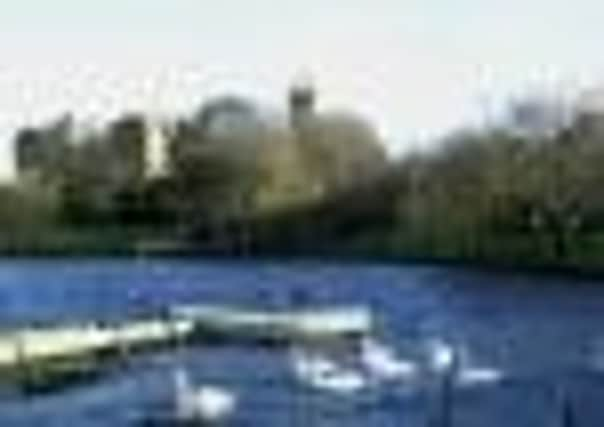No council money to tackle Linlithgow Loch algae


A new report into the health of Linlithgow Loch due for release tomorrow will list a seasonal rise in dangerous blue-green algae and fish deaths linked to low concentrations of oxygen in the water as growing concerns.
The picturesque body of water is one of only two remaining natural lowland lochs in the Lothians and is used heavily for recreational activities such as kayaking, canoeing and fishing.
Advertisement
Hide AdAdvertisement
Hide AdBut in a significant blow, West Lothian Council said it was unlikely to be able to contribute significant funding to projects to improve the water quality.
Scottish Natural Heritage and Historic Scotland, which owns and maintains the loch, have also not committed additional funding.
The loch borders one side of Linlithgow Palace – one of the region’s most popular tourist attractions, which hosted a lavish Chanel fashion show in December.
The Linlithgow Loch Catchment Management Plan has revealed sewage waste from septic tanks, combined sewer overflows and agricultural fertilisers were contributing towards poor water quality.
The report sets out 13 key recommendations, including the need to fund a full amphibian and mammal survey, upgrades to the monitoring programme to better record algal bloom cases, and new sewerage and drainage systems to prevent pollutants entering the loch.
A council panel is now expected to support a charitable trust being formed to rally financial support around the project.
Linlithgow ward Councillor Martyn Day said: “I think if we’re being realistic, if none of the governmental-type partners agencies have the cash to do it then there has to be another vehicle found.
“How realistic a trust is will depend on the enthusiasm from the user groups to do it. Doing nothing’s not an option.”
Advertisement
Hide AdAdvertisement
Hide AdA council report said: “In recent years, the appearance of a seasonal blue-green algal bloom on the surface of the loch has led to concerns about potential public health issues and the serious deterioration in water quality that has led to the formation of these blooms.”
The site has failed to meet targets for water clarity, and phosphorus and bacteria levels from 2005-2010. Allergic reactions, rashes, and blisters around the mouth and nose are all potential health risks for those who come into contact with toxins in the water.
Historic Scotland ranger and visitor services manager Martin Gray said the organisation was assessing all options for a long-term solution.
He said: “We are committed to playing our part in improving Linlithgow Loch’s water quality and providing a sustainable solution for this valuable community, recreational and tourism asset.”